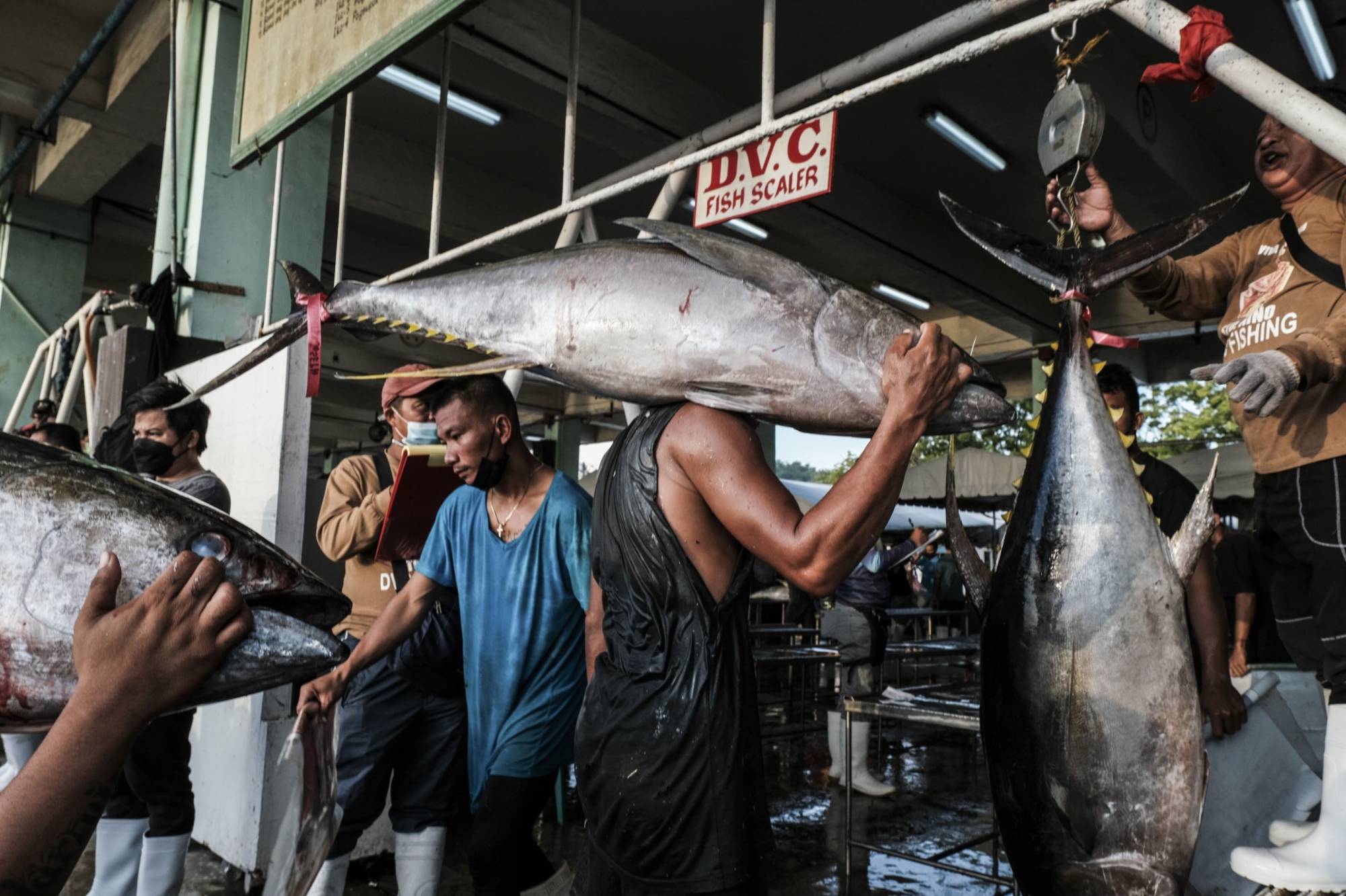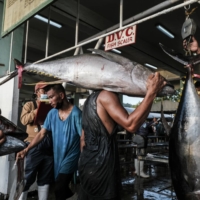Fishing quotas will be introduced for bigeye tuna, a popular sashimi fish, in the Indian Ocean, with Japan and other major consumer countries asked to reduce their catches for resource preservation.
Under the 2024-2025 quotas set for eight economies which account for most of bigeye tuna catches in the Indian Ocean, Japan's annual catches will be capped at 3,684 tons, down by 6% from the 2017-2021 average. The eight also include Indonesia, Taiwan and the European Union.
The Indian Ocean Tuna Commission, which comprises 30 countries and regions, agreed to introduce the quotas at its annual meeting in Mauritius May 8-12, as bigeye tuna resources have been decreasing due to the impact of purse seining, a fishing method for capturing a large amount at one time.
Countries and regions other than the eight economies will be allowed to maintain their catches at 2017-2021 average levels. From 2026, quotas will be reviewed every three years based on resource evaluations.
Still, the new quotas are expected to have only a limited impact on domestic distribution volumes in Japan. According to statistics from Japan's Ministry of Agriculture, Forestry and Fisheries, Japan's overall bigeye tuna catches in 2021, including in other waters, came to 31,530 tons.
As fishing restrictions have already been implemented in the Atlantic and Pacific Oceans, which are major fishing areas, the Japanese Fisheries Agency believes that the Indian Ocean quotas will not lead to a major supply decrease.




